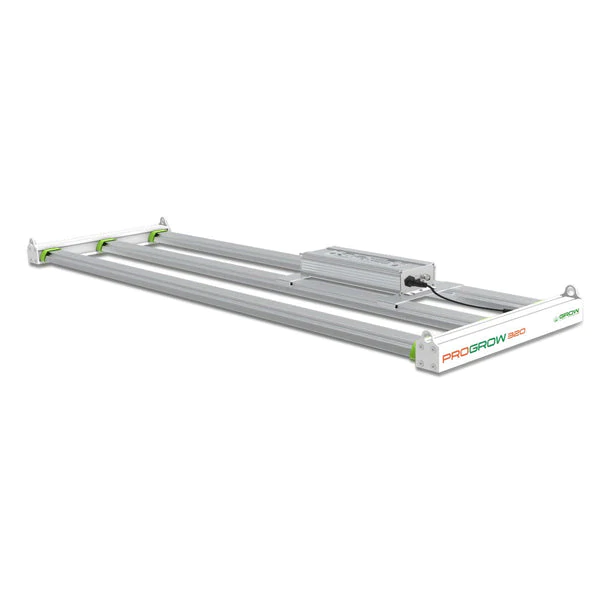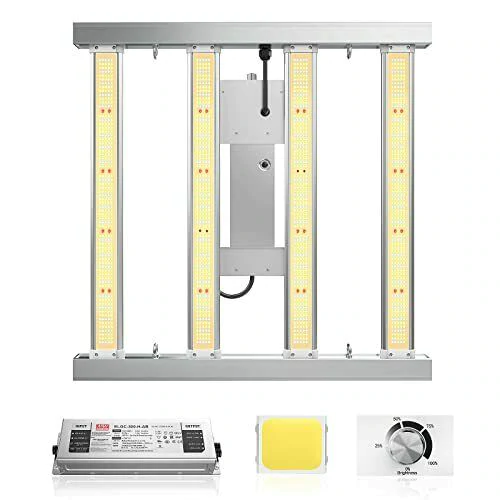- Home
-
SHOP ECO FARM
- ECO Farm Grow Lights
- ECO Farm LED Grow Lights
- ECO Farm Quantum Board
- ECO Farm Samsung LED Grow Lights
- ECO Farm COB Grow Lights
- ECO Farm Commercial Lights
- ECO Farm Supplemental Grow Light
- ECO Farm Fluorescent grow lights
- ECO Farm HPS & MH Grow Lights
- ECO Farm CMH Grow Lights
- ECO Farm HID/CMH Bulbs & Ballasts
- ECO Farm Grow Tents & Kits
- ECO Farm 2x2ft Grow Kits
- ECO Farm 3x3ft Grow Kits
- ECO Farm 3.3x3.3ft Grow Kits
- ECO Farm 4x4ft Grow Kits
- ECO Farm 5x5ft Grow Kits
- ECO Farm Grow Tent - Standard Style
- ECO Farm Grow Tent - Extension & Roof & Lodge Style
- ECO Farm Extraction & Harvest
- ECO Farm Rosin Press Machine
- ECO Farm Dry & Wet Trimmers
- ECO Farm Oil Accessories
- ECO Farm Medicinal Plants Grinder
- ECO Farm Medicinal Plants Containers
- ECO Farm Medicinal Plants Dryer
- ECO Farm Refrigeration Dryer
- ECO Farm Climate Control & Other Accessories
- ECO Farm Inline Duct Fans
- ECO Farm Oscillating Fans
- ECO Farm Exhaust Fans
- ECO Farm Air Filter
- ECO Farm Duct Muffler
- ECO Farm Ventilation Kits
- ECO Farm Plant Humidifiers
- ECO Farm Plant Dehumidifiers
- ECO Farm Hydroponic Accessories
- ECO Farm Other Accessories
- ECO Farm Hydroponics Microscopes
-
TOP BRANDS
- Grow Lights Brands
- Adjust-A-Wing
- Apollo Horticulture
- Bestva
- Black Dog LED
- California Lightworks
- ChilLED Grow Light
- Eco Farm
- HLG - Horticulture Lighting Group
- Kingled
- Kind LED
- Mars Hydro
- Morsen
- Neilo
- NextLight
- Phlizon
- PlatinumLed
- Roleadro
- Optic LED Grow Lights
- ViparSpectra
- Vivosun
- EYE Hortilux
- IPOWER
- NanoLux
- Phantom grow light
- Gavita grow lights
- Grower's Choice
- Lumatek
- Maxibright
- Yearld Pro
- ThinkGrow
- Crecer Lighting
- Green Sunshine Electric Sky
- fohse aries
- loriflux
- luxx
- fluence
- iluminar
- Lex
- LTC
- Rayonled
- FGI
- PHOTONTEK
- Grow Tents & Kits Brands
- Apollo Horticulture
- Black Box
- CoolGrows
- Eco Farm
- GrowLab
- Gorilla Grow Tents
- Mars Hydro
- Quictent
- Secret Jardin
- Unit Farm
- TopoGrow
- VIVOSUN
- Topolite
-
COMPANY INFO
-
COOPERATE WITH US
- Blog
Grow Light Science PROGROW 320 LED Grow Light VS MAXSISUN MG3000 300W LED Grow Light
April 30, 2022
We all want to ensure that our plants has the best possible growing conditions. From lighting to growing medium and watering, every aspect counts.
Today, we’ll concentrate on the lighting aspect of things–namely LED lights, which have taken the homegrown world by storm.
Let’s find out why LED grow lights are some of the most efficient. We’ll also investigate the what, why, and how of these stellar tools. Let’s get into it.
Why Indoors?
Growing indoors offers a host of wide-ranging benefits when compared with outdoor gardening. Here are a couple of reasons why we believe indoor growing is the way to go:
Climate — not all of us are lucky enough to live in areas that provide the amount of sunlight our gardens need to thrive. With indoor growing, as long as you do your research, you’re guaranteed to be giving your plants exactly what they need.
Control — your plant’s wellbeing won’t be subject to inclement weather or any unforeseen changes in conditions when growing indoors. Thanks to indoor grow lights, you’re given total control over your garden’s growing environment so that they see optimal conditions all year round.
Remember though, with great power comes great responsibility. The control you hold over the growing conditions of your garden means it is so important to understand exactly what it requires to thrive. If you don’t get the basics right, you’ll be left with disappointing results.
Grow Light Science PROGROW 320 LED Grow Light

Features:
Grow Light Science Grow 300 320W LED Grow Light is a full spectrum, high performance lighting solution for commercial or home indoor garden or planting operations. The form factor of the Grow 300 allows for expandability and multiple grow room and tent configurations. The incredible light output (PPF), spectral distribution and efficacy of this grow light will give your plants amazing results at an affordable price. PPFD levels of up to 1,500 umols/m2/s will proportionally increase yield as long as other key factors such as CO2, water and nutrients remain in balance. The GROW 300 easily delivers PPFD levels in excess of 1,000 umols/m2/s, either individually or in multi-cell arrays.
MAXSISUN MG3000 300W LED Grow Light

Features:
This MAXSISUN LED Grow Light uses top-of-the-line components with Samsung diodes and a MeanWell driver with a strip light design. The MG3000 provides plants with a rich and uniform PAR distribution with no hot spots, consuming only 300 watts, and delivering a true high efficiency rating PPF of 2.4 μmol/J per joule. Keep the same distance between the plant and the MG3000. Adjust its brightness for different growth stages. We provide PAR graphs including brightness, suspension height and power consumption. Smooth rotary dimmers provide flexibility to reduce energy consumption while reducing electricity bills. It helps you master light levels from normal daylight to super bright.
How to Choose the Best LED Grow Lights
Each kind of LED light has a specific set of ratings; lumens, watts, and kelvins.
Each of them tells you something different about how the light operates. You need to find the ideal combination of all three ratings to light your grow room effectively.
Let’s check out the essential elements of lighting your grow room and how each rating comes into play.
Consider the Size of Your Grow Room
Each type of LED light produces a certain amount of usable spectrum, measured in lumens. Lumens indicate how brightly the light shines and how far away from the plants you can place it.
You need to place lights with a low lumen count relatively close to the plants. Devices with a higher lumen count can be further away from your bushes.
If you have a small grow room, you could install a few lights with a high lumen count. Larger growing facilities require more lights with high lumen ratings or many smaller devices.
Energy Budget
With your energy budget, there’s one essential rating. The light’s wattage tells you how much electricity it uses and how quickly.
The typical standard for measuring electricity usage worldwide is the kilowatt hour. You can calculate how many kilowatt-hours, commonly referred to as units, of electricity you’ll use.
To achieve this, follow these steps:
1 — Divide the wattage by 1,000 to find your ballast’s kilowatt usage.
I.E., a 50-watt unit uses 0.05 kilowatts.
2 — Multiply the result by the number of hours the light will be on each day.
0.05 ✕ 24 = 1.2 kWh each day.
3 — Multiply the daily amount by the number of days in the month.
1.2 ✕ 30 = 36 kWh per light each month.
4 — Calculate the total usage by multiplying the monthly total for each light by the number of lights.
36 kWh ✕ 15 lights = 540 kWh.
5 — To calculate the monthly financial outlay, multiply the overall total by the price per kilowatt-hour in your region.
540 kWh at $0.1331 each means a monthly expenditure of approximately $72.
Plant Type and Needs
Different types of plants have different lighting requirements. The top LED grow lights on the market are all-inclusive but have an exclusive price.
Ask yourself the following questions:
Which light colors do I need?
How many lumens do the plants need to stay healthy?
Does the strain I’m growing have any special lighting needs?
Overall Budget
The best LED grow light for you is the one that fits your overall budget. You need to calculate not only the initial expense but the ongoing costs.
If a part breaks, can you afford to replace it? Will the energy consumption fit your budget? Do you need to build a specific framework to house your lights?
These things, and more, affect your decision. Before you buy, ensure that you work out every outlay. You need a product that is both affordable and meets your needs.
Conclusion
After a long search, we’ve finally found the best LED grow lights for your grow tent, but it’s not easy!
Although it was a tough process, we were able to narrow it down to the best options. From what I can tell, you found this article helpful in making the best choices for your cherished plants.
Also in Indoor Grow LED Grow Light
HLG Greenhouse Pro HE HV 630W LED Grow Light VS Geeklight grow light 480W hydroponic led grow light
October 20, 2023
